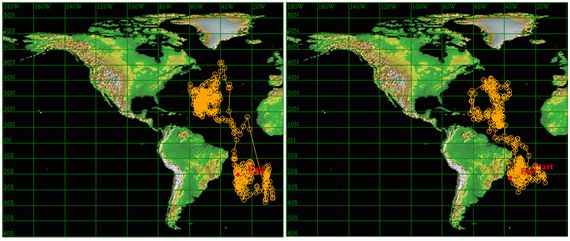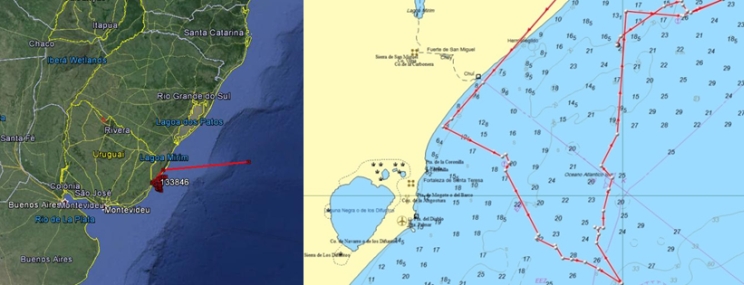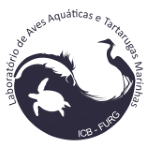Oportunidade de bolsas com aves aquáticas
Temos 2 bolsas de Iniciação Científica CNPq para implementação imediata (R$400,00 por 12 meses).
Inscrição até dia 02 de setembro, impreterivelmente, pelo email lbugoni@yahoo.com.br
Projeto/bolsa 1: Ecologia trófica e contaminação do biguá (Nannopterum brasilianum) no sul do Brasil
Projeto /bolsa 2: Marcadores moleculares na identificação de aves aquáticas: metodologia e aplicações.
Público-alvo: estudantes de graduação da FURG – Ciências biológicas, Oceanologia ou áreas afins que não tenham bolsa ou trabalho remunerado entre setembro de 2022 e agosto de 2023.
Inscrição: Enviar por email um arquivo pdf (máximo 2 páginas),contendo:
- Nome e link par o CV Lattes (atualizado)
- Projeto 1 ou 2 no qual gostaria de atuar (Acima)
- Curso e semestre que está cursando
- Carta de intenção descrevendo seu interesse e motivação para atuar no projeto, experiências anteriores em pesquisa e, se for o caso, no tema do projeto e/ou com aves aquáticas (projeto que atuou, bolsas recebidas, resumos apresentados em congressos, cursos feitos, experiência informar com os temas, etc.). Detalhar ouros aspectos que julgar relevantes.
Resultado será divulgado aos inscritos na segunda-feira 05/09.
Newsletter “Estadão” covers research on seabirs at Trindade Island
Expeditions carried out later 2016 and early 2017 by the team member Danilo Filipkowski, as part of his MSc. Dissertation on matter transfer from sooty tern (Onychoprion fuscatus) colonies to terrestrial ecosystem of Trindade Island had received extensive coverage by the newspaper O Estado de São Paulo (Estadão). The matter transfer is expected to be mediated by invertebrates, mainly the terrestrial crab Johngarthia lagostoma.
A full link with texts in Portuguese and images is at
http://infograficos.estadao.com.br/politica/ilha-de-trindade/a-travessia

Study on Trindade petrels appears in the national TV program “Globo Repórter”
Since 2012, the Waterbirds and Sea Turtles Turtles Lab. develops in Trindade Island the project “Distribution, richness, abundance and habitat use by cetaceans and seabirds between the Brazilian coast and the Trindade and Martin Vaz archipelago in relation to physiographic and oceanographic parameters”. This project is funded by CNPq and is developed in partnership with national institutions (UERJ and UFPR), and logistic support from Brazilian Navy-SECIRM. One key aim is identify the wintering areas of the Trindade Petrel (Pterodroma arminjoniana), species classified as vulnerable by IUCN, and critically threatened by Brazilian Environment Ministry. The Trindade Petrel is a pelagic species that breeds only at Trindade Island in South Atlantic and Round Island in Indian Ocean. Geolocators were attached to petrels, a tag that allows the identification of routes and areas used during wintering period. Preliminary results demonstrate that every years after breeding, Trindade Petrels travel to a oceanic region in North Atlantic, where they stay during the wintering period, before returning to the island and start the breeding again, as shown in maps. The study and its results were noticed in the national open TV program “Globo Repórter”, last April 8th, with Phd candidate Gustavo da Rosa Leal explain his study. The link with the full program is available at http://g1.globo.com/globo-reporter/edicoes/2016/04/01.html#!v/4928531.

Routes and wintering areas of Trindade petrels tracked with geolocators by FURG team.
Magellanic penguins are tracked at sea in southern Brazil
A juvenile Magellanic penguin (Spheniscus magellanicus) was fitted with satellite transmitter and released last August 21, on the beach, near to the Uruguayan border. The bird had been rehabilitated by CRAM-FURG. It was among a group of 11 individuals released. Transmitter deployment was carried out by graduate students from the Waterbirds and Sea Turtle Lab (LAATM) Fernanda Marques and Guilherme Nunes. This project is part of a larger study on the oceanographic patterns associated with the distribution at sea of Magellanic penguins during their wintering period, vulnerability to bluefish (Pomatomus saltatrix) gillnet fishery, and association with their main prey, the Argentine anchovy (Engraulis anchoita). Early this year, other 4 devices had been fitted on penguins captured in the bluefish fishery at the same area. Deployment of devices was carried out by biologist Suzana Martins, also from the LAATM team. This Project is part of Fernanda’s Masters project, and part of a larger project in partnership with Dermersal Fishery Lab at FURG and INCT-Mar, both funded by CNPq. Images show the deployment and tracks over the last few days.
The release on the beach received wide press coverage, in radio, journal and TV:
http://www.correiodopovo.com.br/Noticias/564752/Pinguins-sao-soltos-em-praia-apos-cuidados







